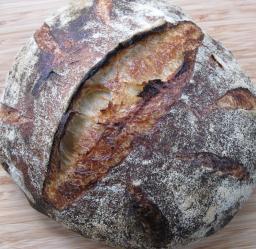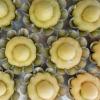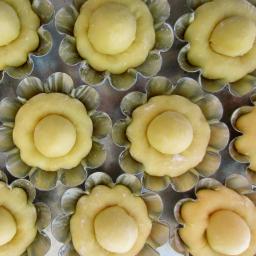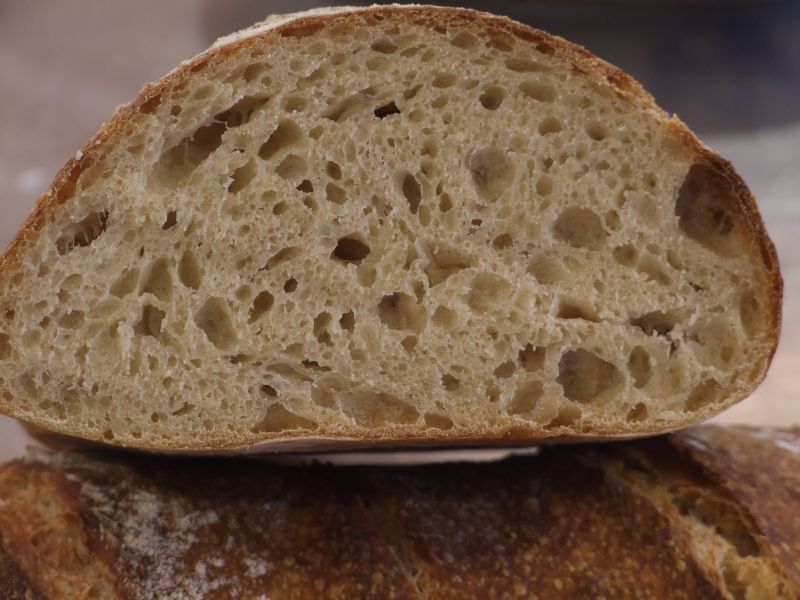Well, I quite failed to get around to blogging last weeks' ciabatta attempt, and now here it's Saturday and I have another bake to describe.
Last week I made another stab at SteveB's double hydration ciabatta. If you recall in week 1, I got very nice flavor and crust, but an unimpressive crumb. I also found the process, which involves almost 30 minutes of mixing, rather cumbersome. The first time I modified Steve's process to add a French fold halfway through the rise, and I figured this time I either needed to modify the recipe more, or stick strictly to Steve's directions. I went for the latter, cutting down the mixing time, and adding 2 stretch-and-folds to the rise. The results, however, were quite similar to week 1:
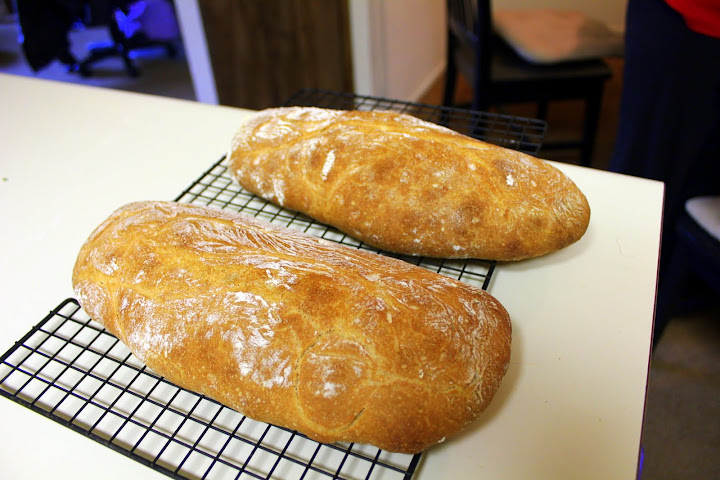
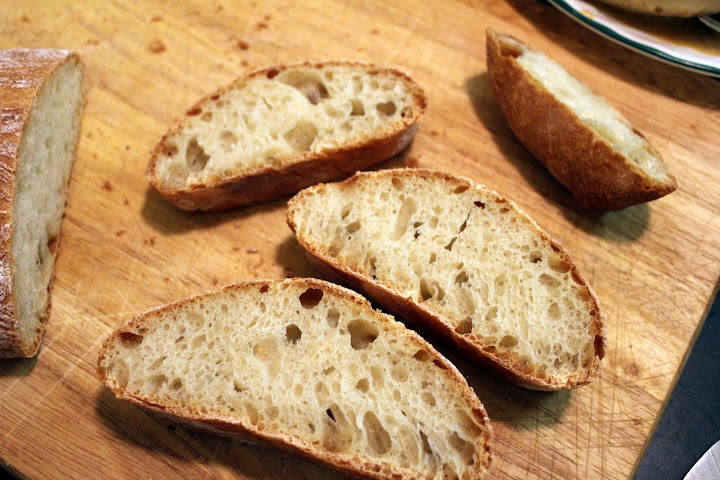
Crumb was perhaps a little better, flavor a little worse. So much for modifications.
Anyway, this week I took a shot at Craig Ponsford's ciabatta, as interpreted by Maggie Glezer, as interpreted by these two blogs (the first has better directions, the latter had weight measurements). This formula involves a very stiff biga with a little bit of whole grain and just the teensiest bit of yeast, which is fermented for a full 24 hours (28 in my case). Hydration is just north of 80%, and it takes 4 stretch and folds to make it behave.
The results, however, were phenomenal
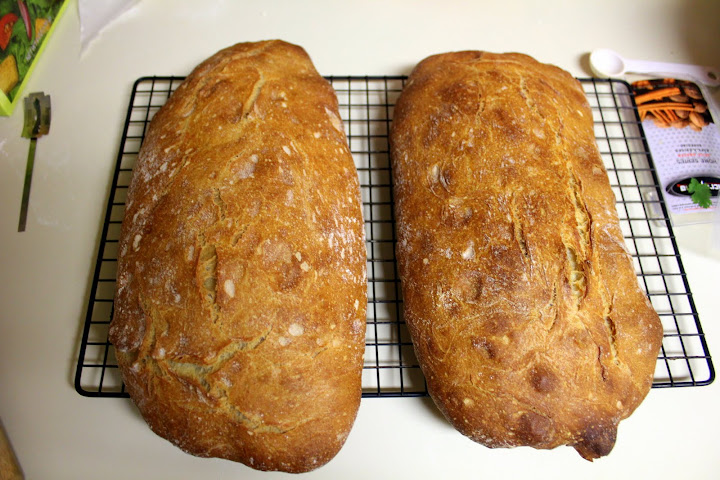
And here's the kicker:
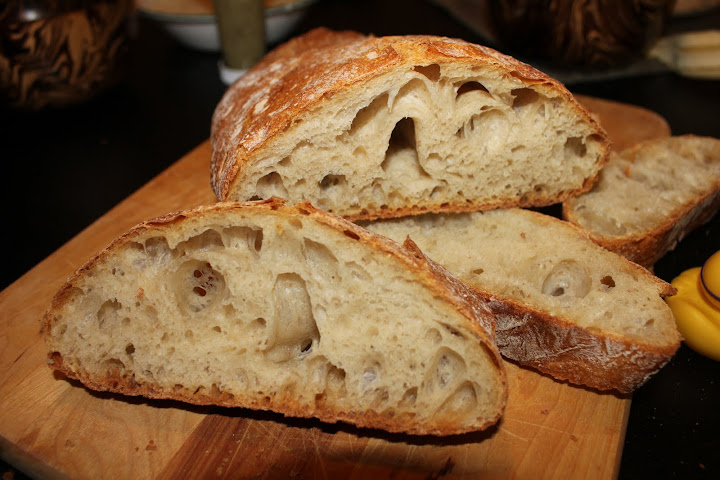
You may notice the loaf on the right is a little funky looking--it stuck to the couch a bit, and I failed to get it all on the parchment when flipping it over, and so I had to manhandle it a bit to clear the couche and slip a scrap of parchment underneath.
As you can see, nicely caramelized crust (nice and crispy too), crumb wonderfully open (nicely chewy too), and the flavor...oh the flavor. This was one of the best tasting breads I have made, period. The combination of a big dose of poolease-y nuttiness, a tinge of sour, and notes of whole grain in the background was just heavenly.
I think this formula is a keeper. Beyond getting fabulous results on this occasion, I enjoyed making it. I like doing stretch-and-folds, feeling the dough and watching it mature and come together. Even if it gets the same results, I'd take a recipe with stretch-and-folds over one with none and a long mixer time any day. Just a matter of personal taste there.
There's still some work to do--I still need to work out my flipping technique, and I still have some kinks to work out in the formula itself, in order to get the exterior shape more even (enough kinks that I'm going to refrain from posting my take on the formula just yet). But this is a positive step for sure!
Happy baking, everyone,
-Ryan
